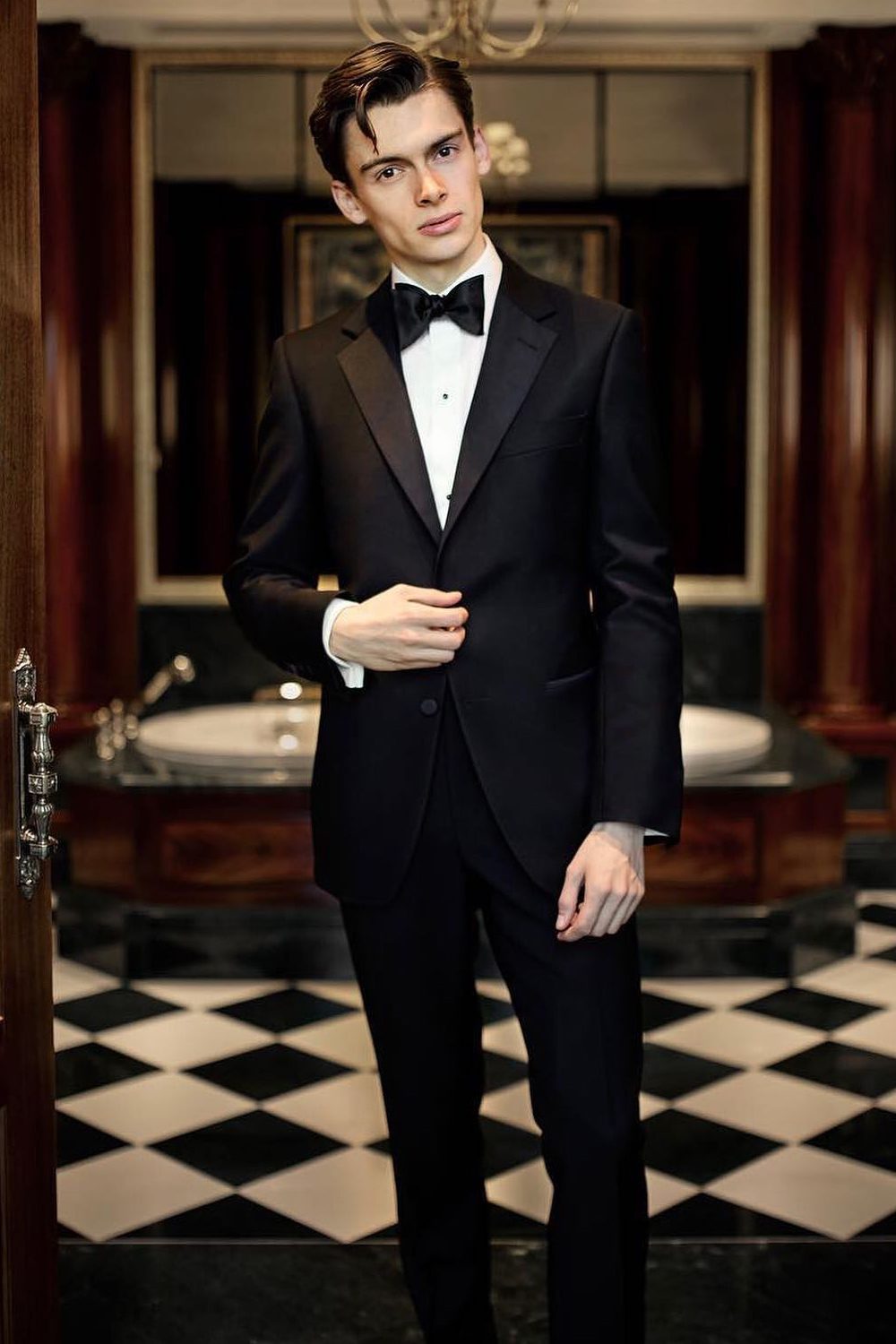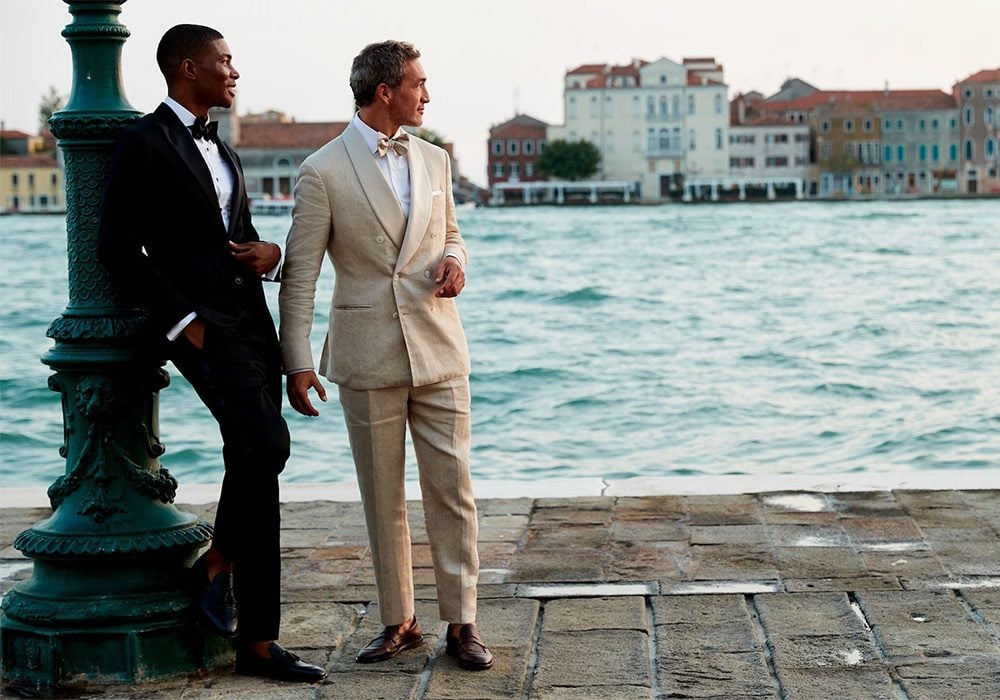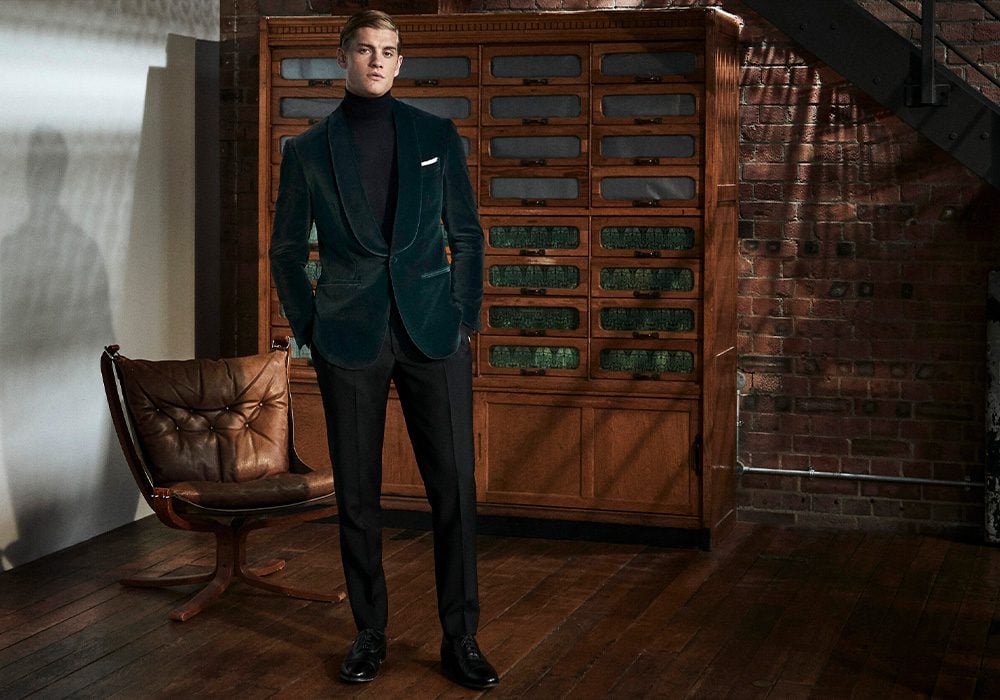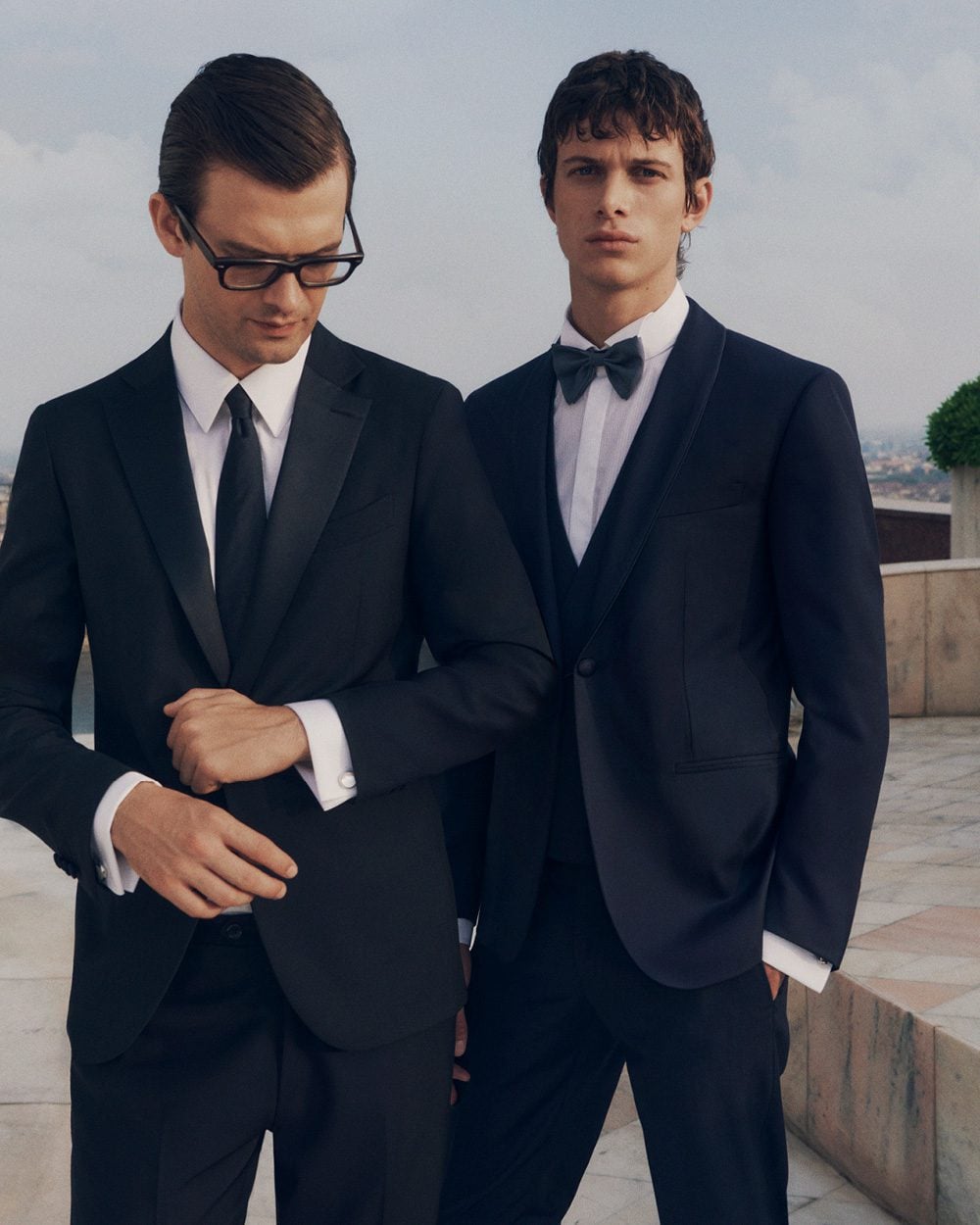In an age of ever more casual dressing, in which business dress is more relaxed and the sartorial line between work and play blurred, it’s tempting to conclude that formal attire is less and less relevant. The direction of dressing is decidedly down rather than up. At least, up to a point – the point where proper dressing up, well beyond ‘smart casual‘, is still required.
These occasions – be it a wedding or a job interview – may be few and far between, but that doesn’t mean you can rock up in a T-shirt and trainers.
The very word – formal, as in formula – gives it away. They may be more open to interpretation, but rules are still rules, and respect – for other people, for the conventions of the situation – is respect.
Here are some guidelines and diktats all modern men should try to adhere when dressing up in 2024.
Do: Get Fitted

Corneliani
Whatever you’re wearing formally, make sure it fits properly. Ready-to-wear tailoring comes in standard sizing, much as any other clothing type does. But whereas casual clothing can carry many shapes, a suit cannot. So, if you don’t see value in investing in made-to-measure, or even bespoke, at least get your suit altered for as sharp a fit as possible.
Sleeve and leg lengths are easily done, and even the chest can be altered. What’s impossible (or at least impractical) is how the jacket fits across the shoulders. Therefore, when selecting your suit, make sure it fits well there at the absolute minimum.
Don’t: Flaunt The Rules


Some occasions will require not just formal dress but a specific kind of formal dress. The demand for white tie or morning dress may be, for most people, a once-in-a-lifetime calling, but many functions still demand black tie.
And if they do, wear black tie: a black/midnight blue dinner suit with a bow-tie, white dress shirt and black dress shoes. This is not an opportunity to express yourself. It’s an opportunity to show you can respect the form of the occasion.
Don’t: Do Novelty


Gieves & Hawkes
Like it or not, formal dressing is above all about dressing to a template that, while it certainly slowly evolves, has been set down by society over decades. It’s more about subsuming your personality to this template than trying to buck it.
By all means, seek out those subtle details that allow you to say you’re you. But, whatever you do, avoid the temptation to slide into gimmickry or novelty. You stand out by trying to subvert the template with that Mickey Mouse tie. Unfortunately, you stand out for all the wrong reasons.
Don’t: Wear Black (If You Don’t Have To)


Canali
Black was the archetypal shade of formal dressing since the late Regency period. It was what all gentlemen wore. But that’s past tense. Black may still be essential for dinner dress, but these days should otherwise be avoided for formal attire.
Blame hotel staff and nightclub bouncers – the black suit has been co-opted as the formal choice of hospitality industry functionaries. Stick with the classics of the formal menswear palette – mid-grey, charcoal grey, navy – but steer clear of the dark stuff.
Do: Dress For The Occasion


Brunello Cucinelli
You’re dressing up—but for what, exactly? Every formalwear occasion has its own cultural background, and you need to be mindful of this if you’re going to fit in.
A wedding around an intimate gathering of close friends in a restaurant requires a different degree of formality than one with 500 guests in a cathedral.
Different companies and professions also have their own notions of formality: banking, for example, is inevitably more conservative than the tech industry. Dress for the crowd you’re dressing for.
Don’t: Think Stiff


Thom Sweeney
Formal dressing does not mean you have to dress as though you’re appearing in a period drama. Your grandfather may be an excellent sartorial role model, but if you choose to, it’s still quite possible to dress up in a contemporary way.
Fashion trends—such as seasonal experiments in proportion or cut—should be avoided. But unless you favour the good value of out-and-out classicism, that doesn’t mean you can’t integrate more of-the-moment details like button fastenings, lapel widths, materials, colours or trouser rises.
Do: Try Separates


Corneliani
Formal dressing doesn’t always mean a suit. Men are slowly coming to appreciate what women have known for generations: separates are still smart, as flannel trousers and a sharp blazer can attest.
But if you’re going to wear separates, make sure they’re separate: picking trousers and a jacket of almost the same shade and almost the same fabric just makes you look like you’re trying to wear a suit and failing.
Instead, think complementary but not matching.
Do: Sweat The Small Stuff


Atelier Munro
For men who enjoy the fun and self-expression afforded by clothing, dressing formally can seem hugely restrictive, what with all this talk of rules and regulations, expectations and standards. But just because you have to wear a sober suit and shirt and tie doesn’t mean these prerequisites leave no room for you to make personal choices.
When selecting a suit, consider texture, for example – there are a wealth of cloths, all with their own characters. Or colour – there are myriad shades of navy and grey. And don’t neglect the details: lapel shape, pleats, drape.
There’s plenty of opportunity for you to have a say still.
Don’t: Complicate Things


Corneliani
If your suit is dark, straight-forward and fits well, and you’re wearing dress shoes and a dress shirt (with a tie, because if you’re wearing a suit formally, you should always wear a tie), you’re already on the home straight of formal dressing for most occasions. It’s not complicated.
When it comes to formal dressing, less is more, so avoid going overboard with extraneous extras. Watch chains, tie clips and fancy lapel pins all add some razzmatazz, of course, but likewise often detract from the greater impact of a clean, uncluttered silhouette.
Settle on a simple, go-to formal outfit and having to dress up won’t feel such a bind either.
Do: Be Consistent


Formal attire doesn’t mean just putting on the right suit. It’s no good doing that and then wearing it with a shirt that can’t carry a tie, or a pair of sneakers (no matter how fashionable doing so may be, trainers are not welcome in true formal dress).
It’s no good wearing immaculate tailoring and throwing an anorak over it. Or thinking you can still wear all those festival bands (take them off), or that skull ear-ring (take it out). You wouldn’t wear a baseball cap with formal attire either – intuition would tell you it’s out of place.
The same consideration is required for everything you wear in formal dress. Think holistically.
